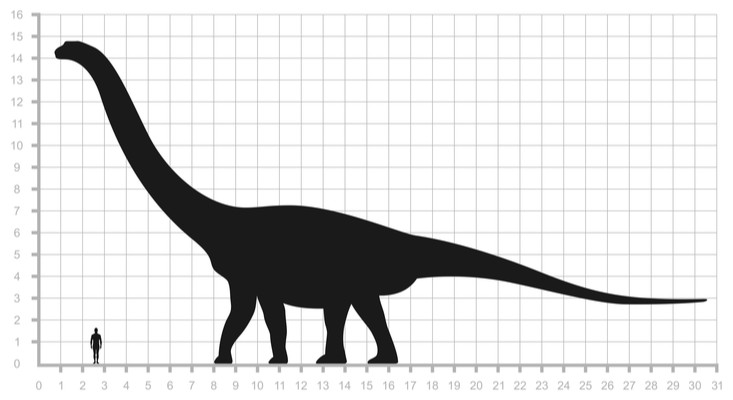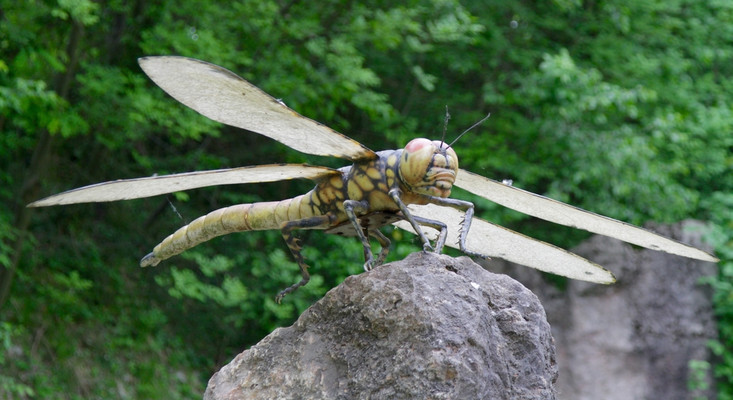A “fly over” usually refers to a low-altitude aerial pass, often showcasing landmarks or landscapes. However, in the context of this article, we’ll explore a deeper meaning, examining the incredible evolutionary journey that enabled birds to literally “fly over” the highest mountains. This journey is intimately linked to the development of their unique respiratory system – a system so efficient it puts our mammalian lungs to shame.
 altFigure 1: Dinosaur’s efficient lungs allowed them to grow to immense sizes, larger than any land mammal.
altFigure 1: Dinosaur’s efficient lungs allowed them to grow to immense sizes, larger than any land mammal.
Birds, the modern descendants of dinosaurs, possess a respiratory system far superior to that of mammals. Unlike our bi-directional airflow, where air enters and exits through the same passage, birds have a unidirectional flow. This constant stream of fresh, oxygenated air moving through their lungs provides the energy required for sustained flight, even at high altitudes where oxygen is scarce. But how did this remarkable system evolve?
The Rise of Lignin and the Oxygen Surge
The story begins about 450 million years ago when plants first colonized land. To combat gravity, they developed lignin, a rigid molecule that allowed them to grow tall. However, early microorganisms couldn’t decompose lignin, leading to massive accumulations of dead plant matter.
 altFigure 2: High oxygen levels during the Carboniferous period allowed insects to reach gigantic sizes.
altFigure 2: High oxygen levels during the Carboniferous period allowed insects to reach gigantic sizes.
This buried carbon led to a dramatic increase in atmospheric oxygen. While benefiting some creatures like giant insects, this oxygen surplus posed a fire risk. Eventually, fungi evolved to decompose lignin, consuming oxygen and releasing carbon dioxide. This triggered a mass extinction event around 250 million years ago due to plummeting oxygen levels.
The Dinosaur Solution: Super-Efficient Lungs
From the ashes of this extinction arose the dinosaurs, equipped with a revolutionary respiratory system. Their lungs, featuring a one-way airflow, air sacs, and hollow bones, maximized oxygen extraction from the thinner atmosphere. This adaptation not only allowed them to survive but also to thrive, paving the way for the evolution of gigantic sizes. Birds inherited this respiratory system, making them the only surviving dinosaurs today.
 altFigure 3: The decomposition of lignin by fungi led to a decrease in atmospheric oxygen and a mass extinction event.
altFigure 3: The decomposition of lignin by fungi led to a decrease in atmospheric oxygen and a mass extinction event.
The Human Factor: Fossil Fuels and the Future
Fast forward to the present, and humanity’s reliance on burning fossil fuels—the remnants of that ancient lignin—is releasing carbon dioxide at an alarming rate, contributing to climate change. This poses a significant threat to the planet and its inhabitants, including birds.
Conclusion: A Legacy of Innovation
The ability of birds to “fly over” seemingly insurmountable obstacles, like the Himalayas, is a testament to the power of evolution. Their unique respiratory system, a direct result of ancient environmental shifts and extinctions, allows for extraordinary feats. However, our own actions now threaten this delicate balance. By understanding the interconnectedness of life on Earth, as exemplified by the story of bird respiration, we can hopefully chart a course toward a sustainable future, ensuring that birds continue to grace our skies for generations to come. The future hinges on our ability to learn from the past and adapt to the challenges of the present.